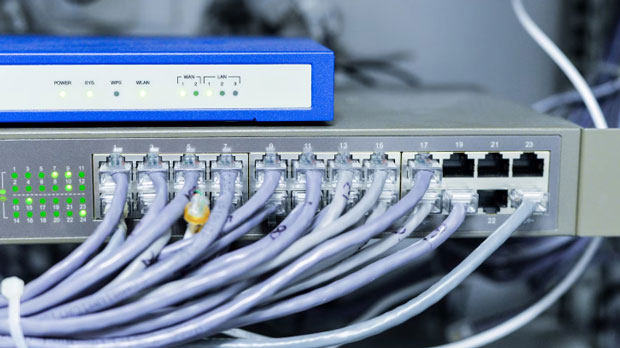A socks5 proxy server is a versatile and efficient way to handle internet traffic by relaying data between clients and servers. It works by tunneling network requests through a proxy, allowing users to access the internet securely and with privacy. SOCKS5 supports both IPv4 and IPv6, and it also offers better performance and flexibility compared to previous versions. This guide will walk you through the process of building and configuring a socks5 proxy server using Python. By leveraging Python's flexibility and powerful libraries, you can set up a lightweight yet secure proxy server for various applications, such as web scraping, anonymous browsing, or bypassing geographical restrictions. Understanding the Basics of SOCKS5 ProxyBefore diving into the implementation, it’s important to understand what a SOCKS5 proxy is and how it works. SOCKS (Socket Secure) is a protocol that allows clients to establish a connection to a server through a proxy server. SOCKS5, the latest version, is particularly popular because of its support for both TCP and UDP traffic and its ability to handle various types of authentication, including no authentication, username/password, or GSSAPI.A SOCKS5 proxy server essentially acts as an intermediary that receives client requests and forwards them to the destination server. The server then sends back the data to the proxy, which in turn forwards it to the client. This tunneling process allows users to mask their IP address and encrypt the data, providing anonymity and security.Setting Up the EnvironmentTo start building a SOCKS5 proxy server, you’ll need a Python environment set up with the necessary libraries. Python 3.x is recommended for compatibility and security. The most crucial library you will need is `PySocks`, which is a pure Python implementation of SOCKS4 and SOCKS5 protocols.1. Installing PySocks You can install the `PySocks` library using `pip`, Python’s package manager: ```bash pip install PySocks ```2. Installing Other Dependencies You may also need `socket` and `select` modules, which are standard Python libraries and provide functionality for network communication and event handling.Implementing the SOCKS5 Proxy Server in PythonNow that your environment is set up, let’s start implementing the SOCKS5 proxy server. The process can be broken down into several steps: 1. Create the Server SocketFirst, we need to create a server socket that listens for incoming connections from clients. This socket will be bound to a specific address (IP and port) and will accept client connections.```pythonimport socketdef create_server_socket(host, port): server_socket = socket.socket(socket.AF_INET, socket.SOCK_STREAM) server_socket.bind((host, port)) server_socket.listen(5) print(f"Server listening on {host}:{port}") return server_socket```In this code snippet, we create a TCP/IP socket and bind it to the specified host and port. The `listen()` method tells the socket to listen for incoming connections. 2. Accept Incoming ConnectionsOnce the server socket is listening, we need to accept incoming connections from clients. For each connection, a new socket is created to communicate with the client.```pythondef accept_connections(server_socket): while True: client_socket, client_address = server_socket.accept() print(f"Connection established with {client_address}") handle_client(client_socket)```This function will run in an infinite loop, accepting connections and calling `handle_client()` to process each one. 3. Handle Client CommunicationOnce a connection is accepted, the server needs to handle the communication. This includes receiving the SOCKS5 handshake and managing the proxy’s data flow.```pythondef handle_client(client_socket): try: Perform SOCKS5 handshake data = client_socket.recv(1024) if data[0] == 5: SOCKS5 protocol version client_socket.send(bytes([5, 0])) No authentication required Process requests and forward data request = client_socket.recv(1024) if request[1] == 1: CONNECT command handle_connect(client_socket, request) except Exception as e: print(f"Error: {e}") client_socket.close()```This snippet begins by reading the incoming data to check if the client is requesting a SOCKS5 handshake. After a successful handshake, the server is ready to handle commands, such as the `CONNECT` command for establishing a connection. 4. Forwarding Data to the Target ServerThe next step is to forward the client’s request to the target server. For simplicity, we assume the client wants to establish a TCP connection (i.e., the CONNECT command).```pythondef handle_connect(client_socket, request): target_host = socket.inet_ntoa(request[4:8]) Extract the target IP target_port = int.from_bytes(request[8:10], byteorder='big') Extract the target port print(f"Connecting to {target_host}:{target_port}") Create a connection to the target server target_socket = socket.socket(socket.AF_INET, socket.SOCK_STREAM) target_socket.connect((target_host, target_port)) Send a success response to the client client_socket.send(bytes([5, 0, 0, 1, 0, 0, 0, 0, 0, 0])) Proxy data between the client and the target server proxy_data(client_socket, target_socket)```Here, the server establishes a connection to the target server and sends a success response to the client. Then, the server acts as a middleman, relaying data between the client and the destination server. 5. Proxy Data Between Client and ServerFinally, we need a method to forward data between the client and the target server, which is the core function of any proxy server.```pythonimport selectdef proxy_data(client_socket, target_socket): sockets = [client_socket, target_socket] while True: readable, _, _ = select.select(sockets, [], []) for sock in readable: data = sock.recv(1024) if not data: return if sock is client_socket: target_socket.send(data) else: client_socket.send(data)```The `proxy_data()` function uses `select.select()` to wait for data on either the client or target socket. When data arrives, it forwards it to the other socket.Configuring the SOCKS5 Proxy ServerOnce the server is implemented, you can configure it to handle more complex scenarios, such as:1. Authentication: You can implement username/password authentication to secure the proxy server. SOCKS5 allows for different authentication methods. 2. Logging and Monitoring: Adding logging features to monitor incoming requests and potential issues will help you maintain the proxy server. 3. Handling UDP: If your application needs UDP support, you can modify the server to forward UDP packets by adding handling for the SOCKS5 UDP ASSOCIATE command.Security ConsiderationsWhile socks5 proxies offer anonymity and security, they should be configured properly to avoid potential security risks:1. Restrict Access: Limit access to the proxy server to only trusted IPs or users.2. Encryption: Although SOCKS5 itself does not encrypt traffic, you can implement encryption at the application level for better security.3. Authentication: Implement proper authentication mechanisms to prevent unauthorized access.ConclusionBuilding a SOCKS5 proxy server using Python is a great way to learn about network programming and proxying. With just a few lines of code, you can create a secure, flexible proxy that can handle both TCP and UDP traffic. By customizing the implementation, you can enhance security, add authentication, or adapt the server to specific needs. Whether for personal use or as part of a larger application, a SOCKS5 proxy server can be a powerful tool for managing network connections.
Jan 13, 2025
![arrow]()




























































